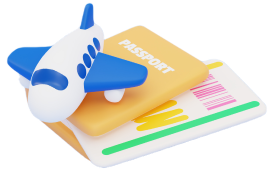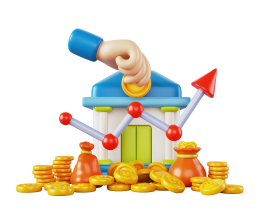-
Visas & Immigration
-
Taxes
-
Cost of Living
-
Companies Hiring
-
Relocation Companies
-
Jobs
-
Salaries
-
Healthcare & Insurance
-
Webinars
Cost of Living in Sweden

Rebeka Meszaros
Rebeka is a professional content writer who specializes in marketing, business, travel, and expat tips. She enjoys sharing practical, down-to-earth advice, whether it's helping businesses better their marketing strategy or providing insights about living overseas. Rebeka adds a personal touch to her writing, ensuring that every piece connects with readers.

Oleksandra Dosii
Oleksandra is a dedicated marketer with a passion for growing HR-tech products. She believes content marketing is about delivering high-quality content that provides value—not just generating leads. Since 2016, Oleksandra has been involved in tech talent relocation.

Start Advertising

In Sweden, the estimated total monthly cost is around €1,780 for a single person. For a family of four, it comes to approximately €4,667 (Source: Numbeo).
Let’s break down the expected costs for food, transportation, utilities, leisure, and childcare to help you manage your budget effectively.
How expensive is it to live in Sweden?
Sweden is the 14th most expensive country to live in Europe in 2024. For a family of four, the estimated monthly costs are around €3,279, plus rent, which averages €1,388. A single person’s monthly expenses are about €895, with rent coming in at around €885.
Compared to some other European countries, Sweden’s living costs are lower. In Germany, a family of four spends about €5,048 a month including rent, while a single person spends €1,880. The Netherlands is even pricier, with a family of four looking at €5,589 a month, and a single person paying €2,352. In comparison, the overall Sweden cost of living is slightly lower for both families and individuals (Source: Numbeo).
Most expensive city to live in Sweden?
The most expensive city to live in Sweden is Stockholm, with estimated monthly costs of €2,448 for a single person. Gothenburg follows at €1,938, and Malmö comes in at €1,707. These cities have higher living expenses (including rent) compared to other parts of the country.
Cheapest city in Sweden
The cheapest city in Sweden is Norrköping, with an estimated monthly cost of €1,108. Other affordable cities include Jönköping at €1,273 and Helsingborg at €1,256. These cities offer lower living costs compared to Sweden's bigger urban centers (Source: Livingcost.org).
Cost of living in Sweden vs the UK
In Sweden, a family of four spends around €4,667 per month, including rent, while in the UK, that same family would pay about €5,338. For a single person, living costs in Sweden are roughly €1,780 per month compared to €2,210 in the UK. Rent in Sweden is generally cheaper too, with a one-bedroom apartment in the city center costing about €885, compared to €1,249 in the UK. Even for a three-bedroom apartment, the cost of living in Sweden remains more affordable at €1,388 versus €2,084 in the UK (Source: Numbeo).
(London is a separate case, with living costs that far exceed the national average and the Swedish average.)
Comparing the cost of some everyday groceries (Source: Numbeo):
| Item | Sweden (€) | UK (€) |
| Cappuccino (regular) | 3.80 | 3.82 |
| Domestic beer (0.5 liter draught) | 6.60 | 5.30 |
| Meal at an inexpensive restaurant | 11.38 | 17.68 |
| Bottle of wine (mid-range) | 8.75 | 9.43 |
| Eggs (regular, 12) | 3.60 | 3.46 |
| Chicken fillets (1kg) | 10.45 | 7.81 |
Cost of living in Sweden vs the US
The cost of living in Sweden is generally lower than in the US when you exclude rent. A family of four spends about €3,279 per month in Sweden, compared to €3,754 in the US. For a single person, it's €895 in Sweden versus €1,055 in the US. Rent in the US is higher, with a one-bedroom costing around €2,646, while in Sweden, it’s about €885. Overall, including rent, a family of four in the US spends around €5,334 per month, while in Sweden, it’s about €4,667 (Source: Numbeo).
Comparison of everyday groceries (Source: Numbeo):
| Item | Sweden (€) | US (€) |
| Cappuccino (regular) | 3.80 | 4.62 |
| Domestic beer (0.5 liter draught) | 6.60 | 5.39 |
| Meal at an Inexpensive Restaurant | 11.38 | 17.98 |
| Bottle of wine (mid-range) | 8.75 | 13.49 |
| Eggs (regular, 12) | 3.60 | 3.31 |
| Chicken fillets (1kg) | 10.45 | 10.84 |
Rent per month
Here’s the average monthly rent in Sweden, which varies depending on the location and size of the apartment: (Source: Numbeo):
- Apartment (1 bedroom) in city center: €885
- Apartment (1 bedroom) outside of center: €638
- Apartment (3 bedrooms) in city center: €1,388
- Apartment (3 bedrooms) outside of center: €1,062
Expats renting in Sweden should expect moderate rent increases, with a 5% rise already seen this year for residential properties. For 2024, landlords are pushing for around a 12% increase, though many negotiations are still ongoing. Shorter leases are becoming more common, and with higher vacancy rates in older properties, there might be more opportunities to find rentals in city centers (Source: European Valuers’ Alliance).
How to find an apartment in Sweden
Renting in Sweden can be tough, especially in cities like Stockholm, Gothenburg, and Malmö, where demand is high and supply is limited. First-hand rental contracts, which come directly from landlords, often have long waiting lists. In most cases, expats will need to rely on second-hand rentals (sublets), which are usually short-term and can be much more expensive. If you’re new to Sweden, starting with a short-term rental through sites like Samtrygg is a good idea. You don’t need a Swedish personal ID number to use Samtrygg, and it offers protection against fraud. Another popular option is Blocket.se, but it’s competitive, and you’ll need to be quick to secure a place.
When renting, you’ll usually need a Swedish personal ID number (personnummer), proof of income, and an employment contract, especially for first-hand leases. For second-hand leases, always confirm that the landlord has approved the sublet to avoid issues later on. To help with your search, BostadDirekt is another site to check for rental listings, though it comes with a fee for landlord contact details. Be sure to protect yourself against rental fraud by avoiding offers that seem too good to be true.
We're happy to assist you and provide a quote or connect you with our trusted partners who have helped many of our users find housing in Sweden. Whether you're searching for short-term rentals or long-term apartments, we have reliable contacts to make your search smoother.
Utilities
A big part of your Sweden cost of living is the monthly utility costs (Source: Numbeo):
- Basic utilities (electricity, heating, cooling, water, garbage) for an 85m2 apartment: €100
- Mobile phone plan with calls and 10GB+ data: €25
- Internet (60 Mbps or more, unlimited data): €29
To save on energy costs in Sweden, start by using tools like PriceRunner and Compricer to compare electricity providers and get the best deal. You can also check out variable electricity rates on Elskling, which lets you save money by using electricity during off-peak hours. When upgrading appliances, go for energy-efficient models with top energy ratings (A-G) to lower your electricity usage in the long run. These simple steps can contribute to lowering your Sweden cost of living.
Public transport
Getting around Sweden is easy once you know the options. Each region has its own public transport system, like SL in Stockholm and Västtrafik in Gothenburg. For longer trips between cities, trains are a fast option, with SJ offering student discounts and MTRX providing affordable, comfortable rides. If you're flying, Flygbussarna is a good bus service for airport connections. To compare routes and prices, apps like Omio are super helpful for both local and long-distance travel.
Here’s a general overview of ticket prices for public transport in Sweden (Source: Numbeo):
- One-way ticket for local transport: €3.15
- Regular monthly pass: €73
- Starting fare for a taxi ride: €5.30
- An hour of waiting time in a taxi: €52
- Gasoline: €1.68 per liter
Food
When grocery shopping in Sweden, budget-friendly options include Lidl and Willy’s, while ICA and Coop are mid-range to pricier stores. Bring your own reusable bag to avoid extra costs and help the environment. Use translation apps like Google Translate if you’re not familiar with Swedish labels, and don’t be afraid to try new Swedish brands or recipes from store websites like ICA and Coop.
Groceries in Sweden cost around (Source: Reddit):
- For a single person: €170-€250
- For a couple: €350-€600
- For a family of four: €800-€1,000
Here’s a quick look at average prices for eating out (Source: Numbeo):
- Meal at an inexpensive restaurant: €11.40
- Meal for two people at a mid-range restaurant (three-course): €70
- McMeal at McDonald's (or equivalent combo meal): €8.80
- Domestic beer (0.5 liter draught): €6.50
- Cappuccino (regular): €3.80
- Coke/Pepsi (0.33 liter bottle): €2
- Water (0.33 liter bottle): €1.90
Mobile phone plan
When setting up a mobile phone in Sweden, you’ll need to choose between prepaid SIM cards or mobile contracts. You’ll need proof of identity, a Swedish personal number, and a bank account.
Main providers:
- Telenor: Reliable coverage with plans from €19 to €30 per month, including free calls, SMS, and data.
- Telia: Strong coverage with plans starting from €9 to €35 per month, both contracts and prepaid options.
- Tre: Offers plans between €17 and €30 per month, with decent data packages.
Cheaper options:
- Vimla: Plans start from €4.50 per month, no binding periods, and use Telenor’s network.
- Hallon: Pplans from €2 to €9 per month for the first three months.
eSIMs:
- Providers like Telenor, Telia, and Chilimobil offer eSIMs for compatible phones. Activation fees are around €4.50.
Childcare
In Sweden, childcare is accessible and subsidized based on your household income, which helps with the cost of living in Sweden for families. The system uses a maximum fee (maxtaxa) to cap costs, so what you pay depends on your income. For more details on childcare options and benefits, check out Skolverket, or contact your local municipality. You can also find more information on subsidies and services through Försäkringskassan.
Types of childcare and prices (Source: NurseryWorld):
- Public daycare (Förskola): Costs around €120-€130 per month for the first child, €80-€90 for the second, and €40-€45 for the third. Prices vary depending on income.
- Private daycare: Prices are similar to public daycare, following the same maxtaxa system.
- Preschool: Free for children aged 3+ for 15 hours per week.
- After-school care (Fritidshem): Costs range from €80-€130 per month, depending on your income and child's age.
- Nannies: Typically cost between €10-€20 per hour.
- Family daycare (Pedagogisk omsorg): Similar in cost to public daycare, offering a more home-like setting.
On average for a year (Source: Numbeo):
- Preschool (or kindergarten), full day, private, monthly for 1 child: €124
- International primary school, yearly for 1 child: €2,222
Gym
In Sweden, gyms offer flexible memberships like monthly subscriptions, annual contracts, and pay-as-you-go options. Many, such as SATS and Fitness24Seven, provide access to multiple locations and 24-hour entry. Discounts for students and seniors are common, and most gyms require a one-month notice to cancel. Trial periods or day passes are often available to try out before committing.
Popular gyms in Sweden with monthly costs:
- Friskis & Svettis: €30-€40
- SATS: €60-€80
- Nordic Wellness: €25-€50
- Fitness24Seven: €20-€25
- Actic: €40-€60
- STC: €30-€50
- Puls & Träning: €35-€45
- Fitness club, monthly fee for 1 adult (average): €35
Explore Cities
Need help finding housing abroad?

Fill out this form

Shoot us an email with your inquiry at [email protected].





















